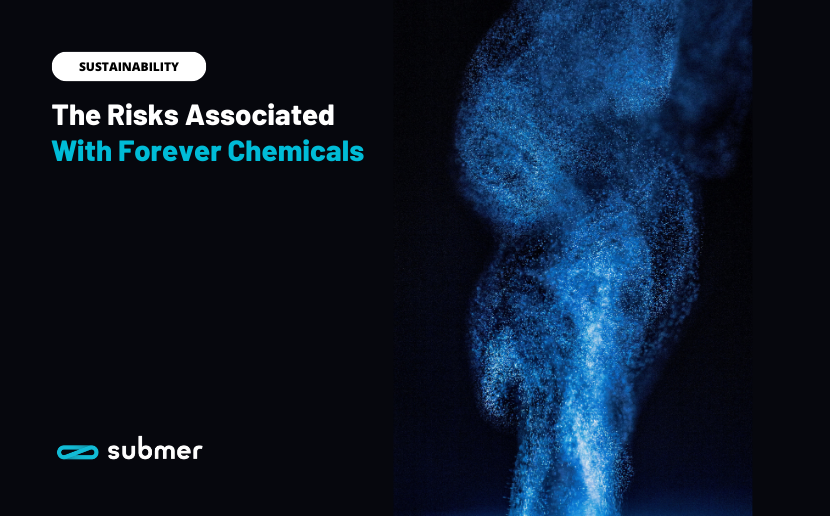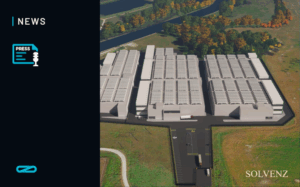In the span of a mere century, PFAS has gone from something non-existent to permeating our bloodstreams. The omnipresence of PFAS chemicals and their alarming effects are gathering increasing concern, and more implications continue to come to light.
In this blog post, we take a look at the problem with PFAS, its involvement in the datacenter industry, and propose actionable steps we can take to prevent any new product or technology from using these harmful chemicals again.
What is PFAS?
Per- and poly fluoroalkylsubstances (PFAS) are manmade chemicals that contain a carbon molecule and multiple Fluorine atoms. There are thousands of different PFAS, with the most commonly known being PFOA and PFOS. Their chemical resistance means they can be found in practically every facet of our daily lives in objects such as non-stick pans, water-resistant jackets, and cosmetics.
The Dangers of PFAS
The fact that many PFAS last virtually forever (earning them the term “forever chemicals”) makes them great for these products but it’s also the biggest concern. Despite their utility, this long-lasting nature presents environmental and health concerns.
This carbon-fluorine bond is extremely strong and therefore persistent in the environment 1. During the production of PFAS, a lot of chemicals are released which contaminates our rivers, our soil, and the biodiversity.
Exposure occurs not only through direct contact with PFAS-containing products but also through food and water consumption. For example, in the Faroe Islands, where no PFAS industry exists, the population is highly contaminated due to their fish consumption2 . In fact, even polar bears hunting in the Arctic Sea have been found to have high levels of PFAS in their blood 3. Alarmingly, 5/5 of our Submer team members tested had PFAS and PFOS in their blood.
The link between PFAS and cancer, thyroid disease, and many other health problems underscores the fact that this is a societal concern.
PFAS in the Datacenter Industry
Due to their low boiling point and non-flammability, PFAS make excellent refrigerants. For this reason, you’ll find them in almost every air conditioner on the planet and in many chillers, which make up crucial aspects of the cooling systems in many datacenters. PFAS even finds its way into server components and cables, even in unexpected elements such as switchgear.
The recent F-Gas ban from the European Data Centre Association (EUDCA) attempts to curb the use of harmful chemicals in these components, putting regulations on the amount of F-Gases that can be sold, banning their use when alternatives are available, and requiring better servicing of existing equipment4.
However, where the most PFAS is found in the datacenter industry is in two-phase immersion cooling. Similar to single-phase immersion cooling, this technology differs when it comes to the heat removal process where the fluid is boiled to provoke low-temperature evaporation.
The backbone of two-phase immersion cooling is PFAS; and while major two-phase player 3M has decided to discontinue the use of these chemicals from its portfolio by 2025 5, broader adoption of this commitment hasn’t followed suit.
What is particularly worrying is that the PFAS issue is known. Every time a PFAS chemical is banned, formulas are tweaked slightly in order to get them back out on the market. Some claim to use sustainable PFAS with a Global Warming Potential (GWP) of almost 0 global warming potential, labeling them as “green” PFAS; in reality, there is no such thing.
With the thousands of PFAS chemicals out there now, it would take decades to demonstrate its true effects on human health and the environment. In 2022, the global market size for PFAS was €26 billion, whereas the societal cost was €16 trillion 6. Sadly, industry lobbying is powerful and well-organized, undermining the scientific and political community’s efforts to ban PFAS.
Next Steps to Banning Forever Chemicals
In summary, it’s imperative that PFAS be excluded from any new product or technology. Despite less than 10% of PFAS chemicals being considered essential7 , their environmental proliferation continues to grow. The solution lies in halting its production completely.
On an individual level, it’s important to understand what PFAS is. Then, try to reduce your exposure to it, and finally, encourage your political representative to take action in the PFAS debate8.
At Submer, we’re actively looking into how we can eliminate PFAS from datacenters for good. For more information on single-phase immersion cooling and strategies to make your datacenter more sustainable, reach out to one of our experts below.
References
- PFAS Contamination in the U.S, Environmental Working Group ↩︎
- The Forever Chemical Scandal, Bloomberg Investigates ↩︎
- Choose Your Poison—Space-Use Strategy Influences Pollutant Exposure in Barents Sea Polar Bears, Environmental Science & Technology ↩︎
- In the quest for data center sustainability, new F-Gas regulations must be embraced, Data Centre Dynamics ↩︎
- 2-Phase Immersion Cooling Halted Over Multi-Billion Dollar Health Hazard Lawsuits, ServeTheHome ↩︎
- ChemSec identifies the top 12 PFAS producers in the world and reveals shocking societal costs, ChemSec ↩︎
- The battle over PFAS in Europe, Chemical & Engineering News ↩︎
- Manifesto for an urgent ban of ‘forever chemicals’ PFAS ↩︎



